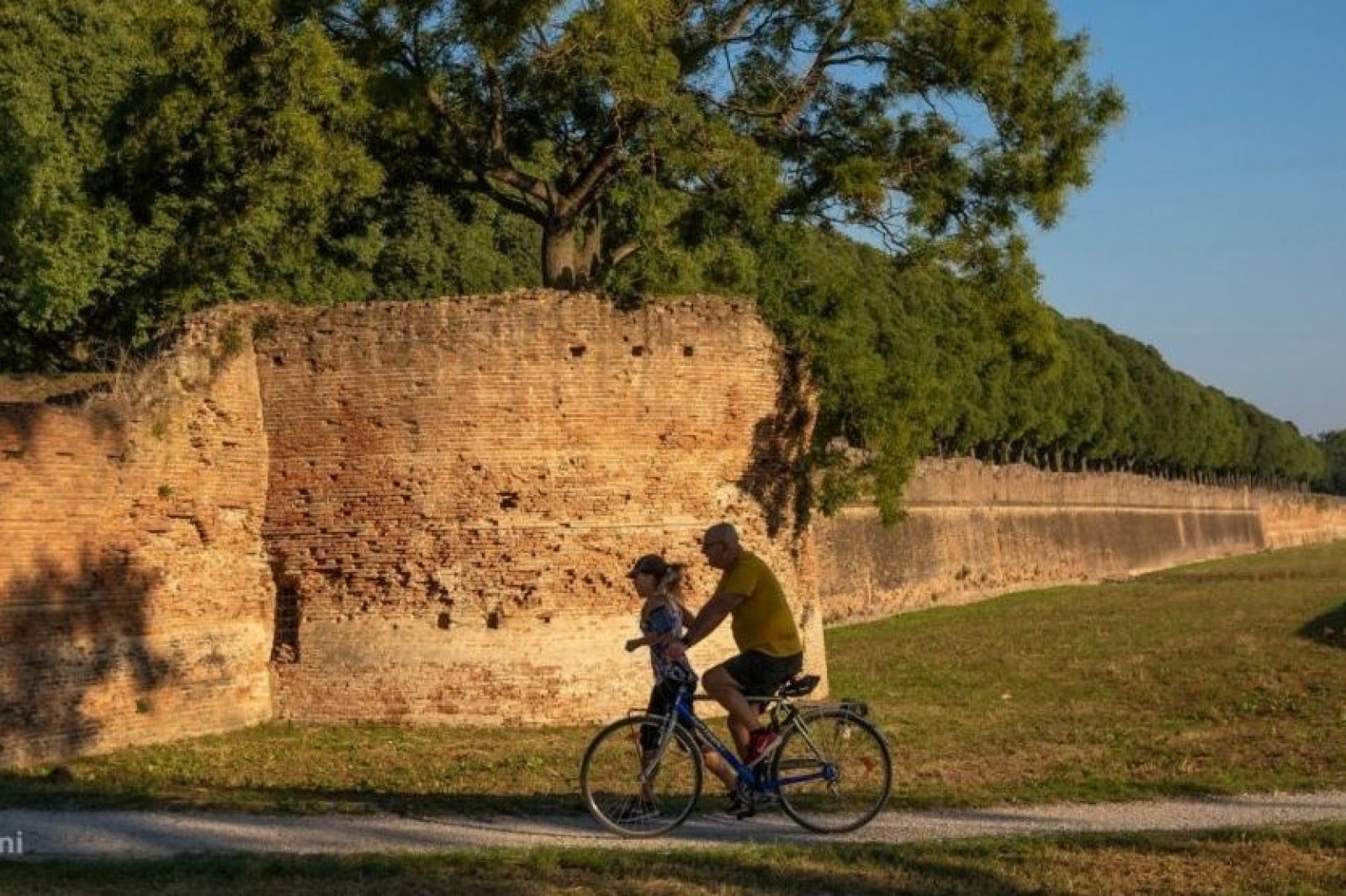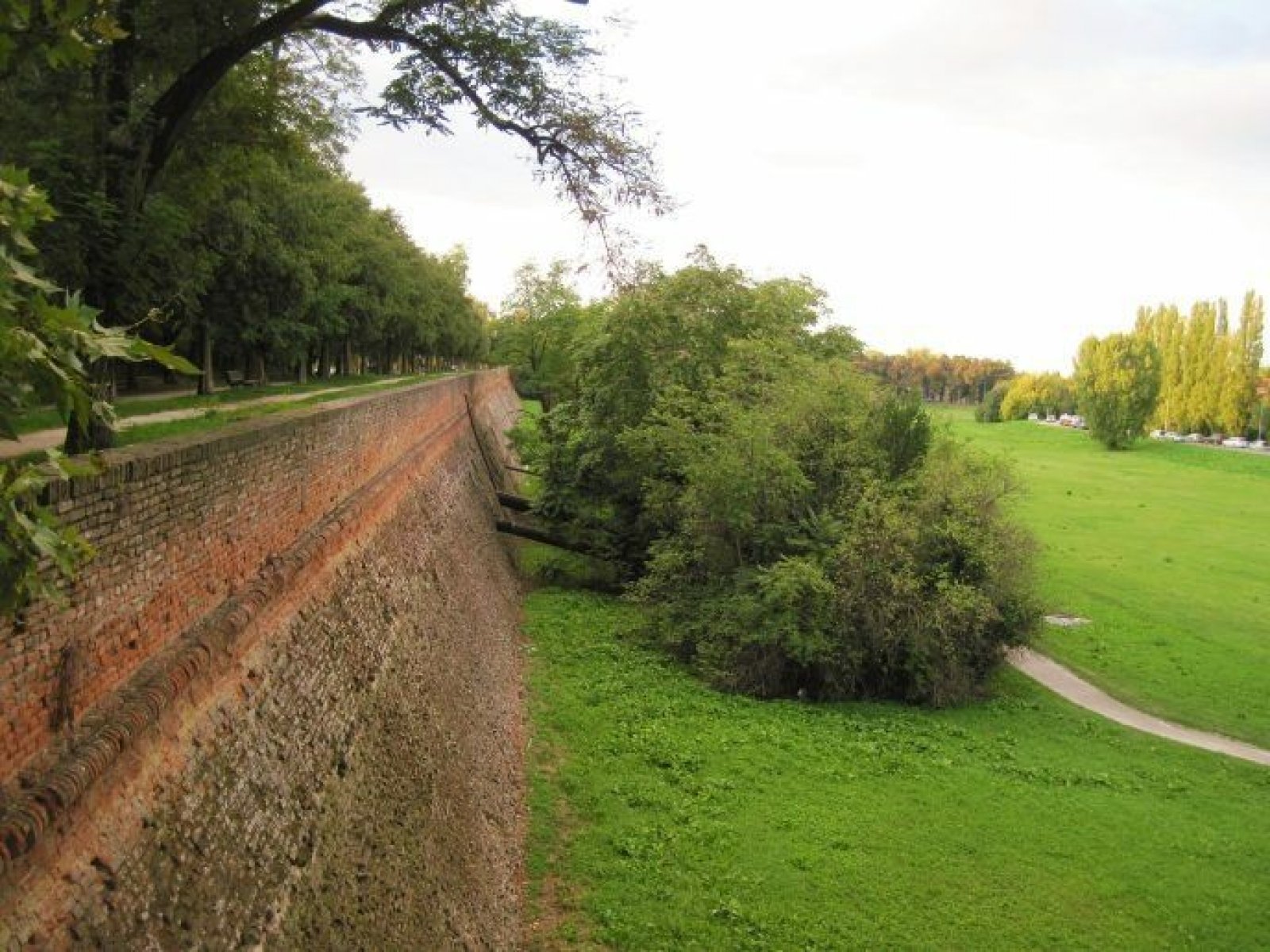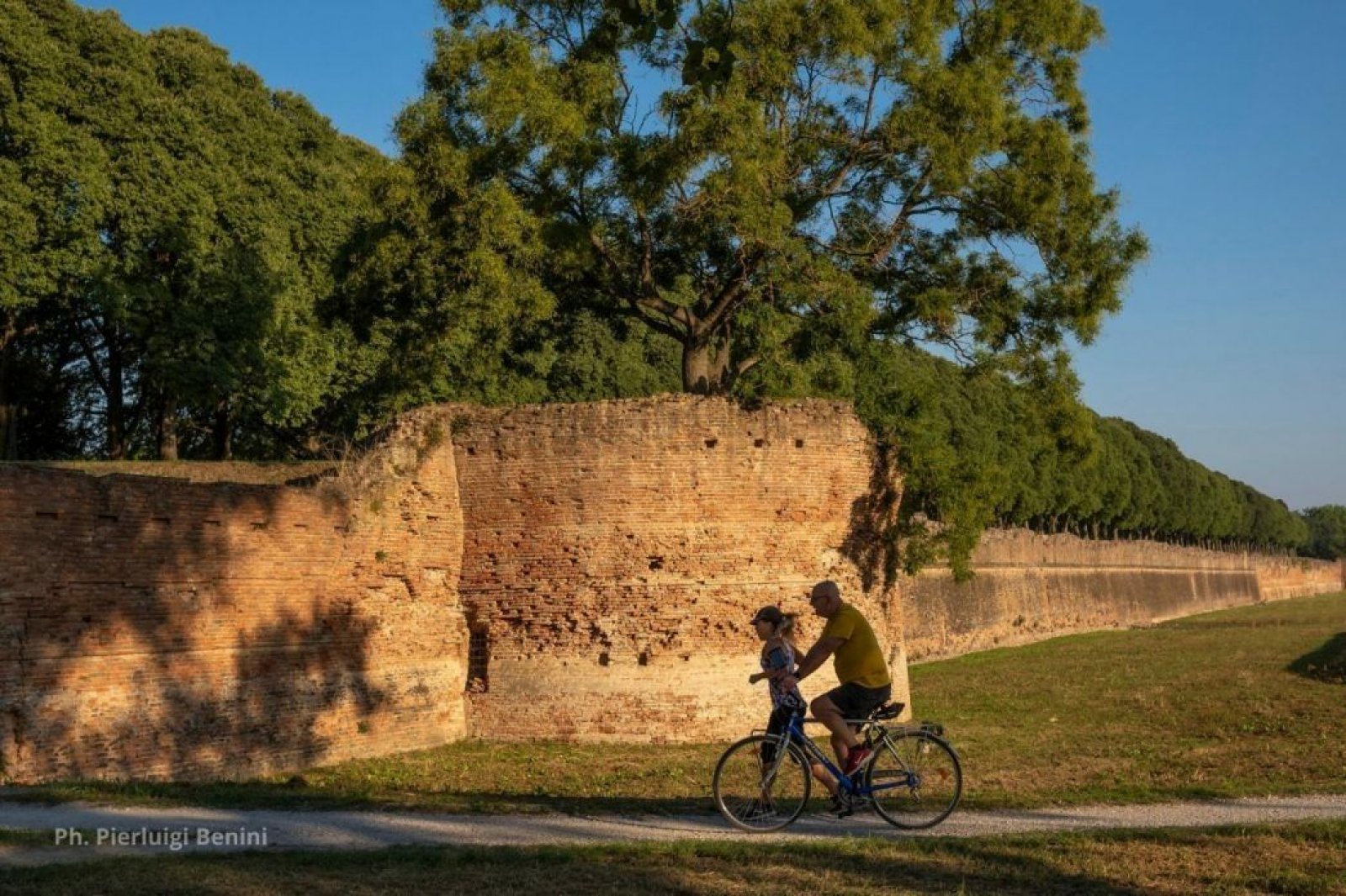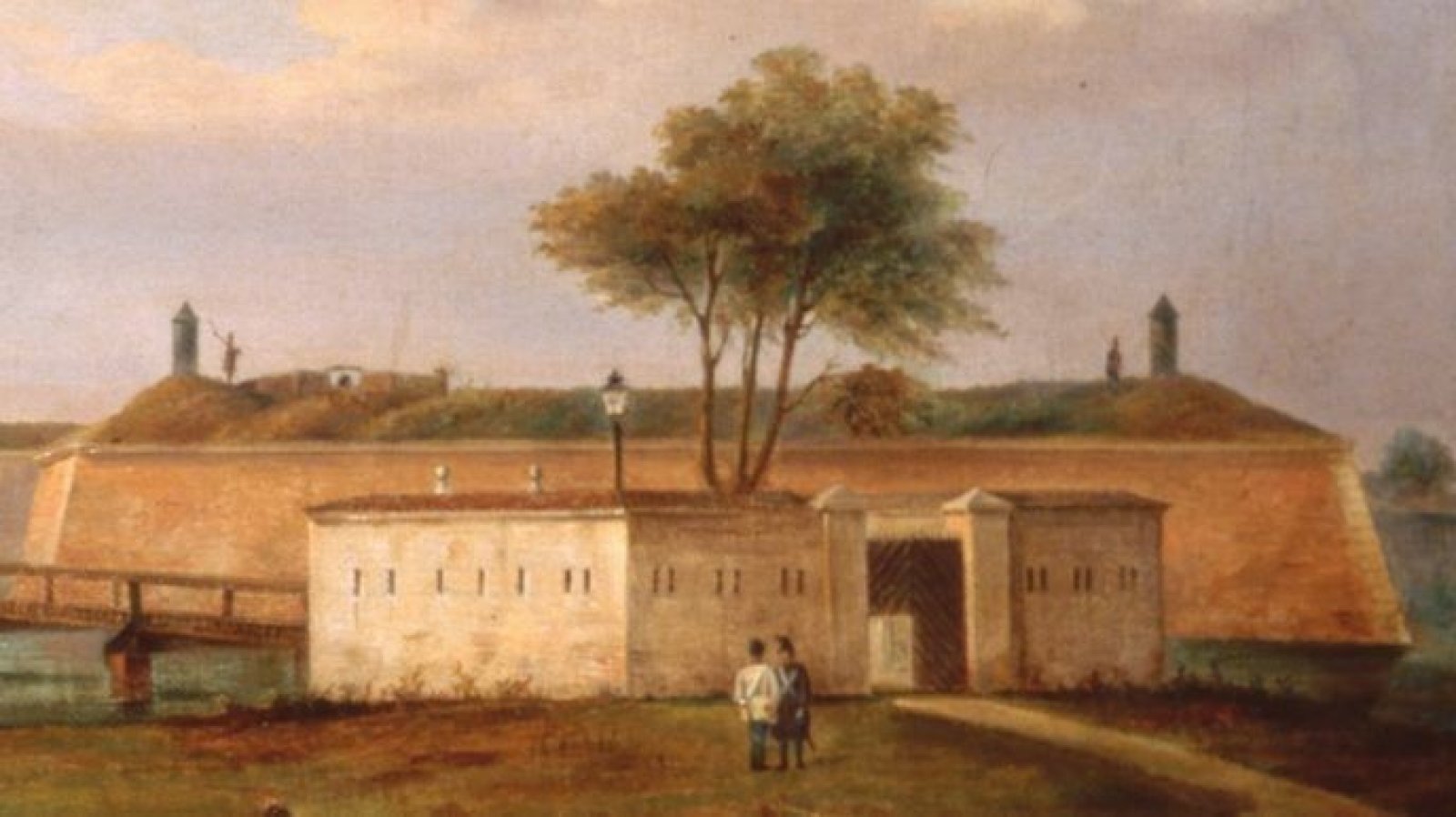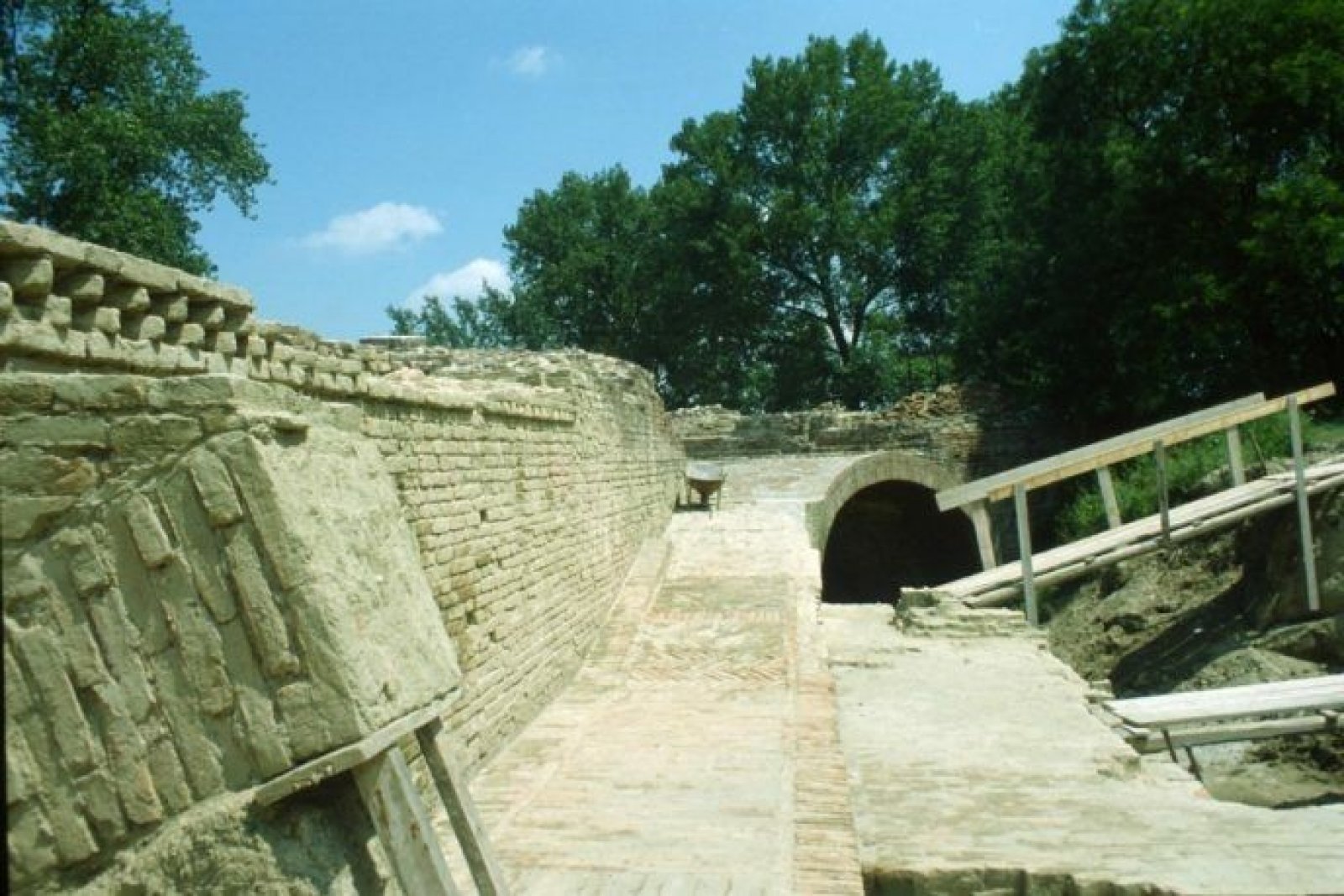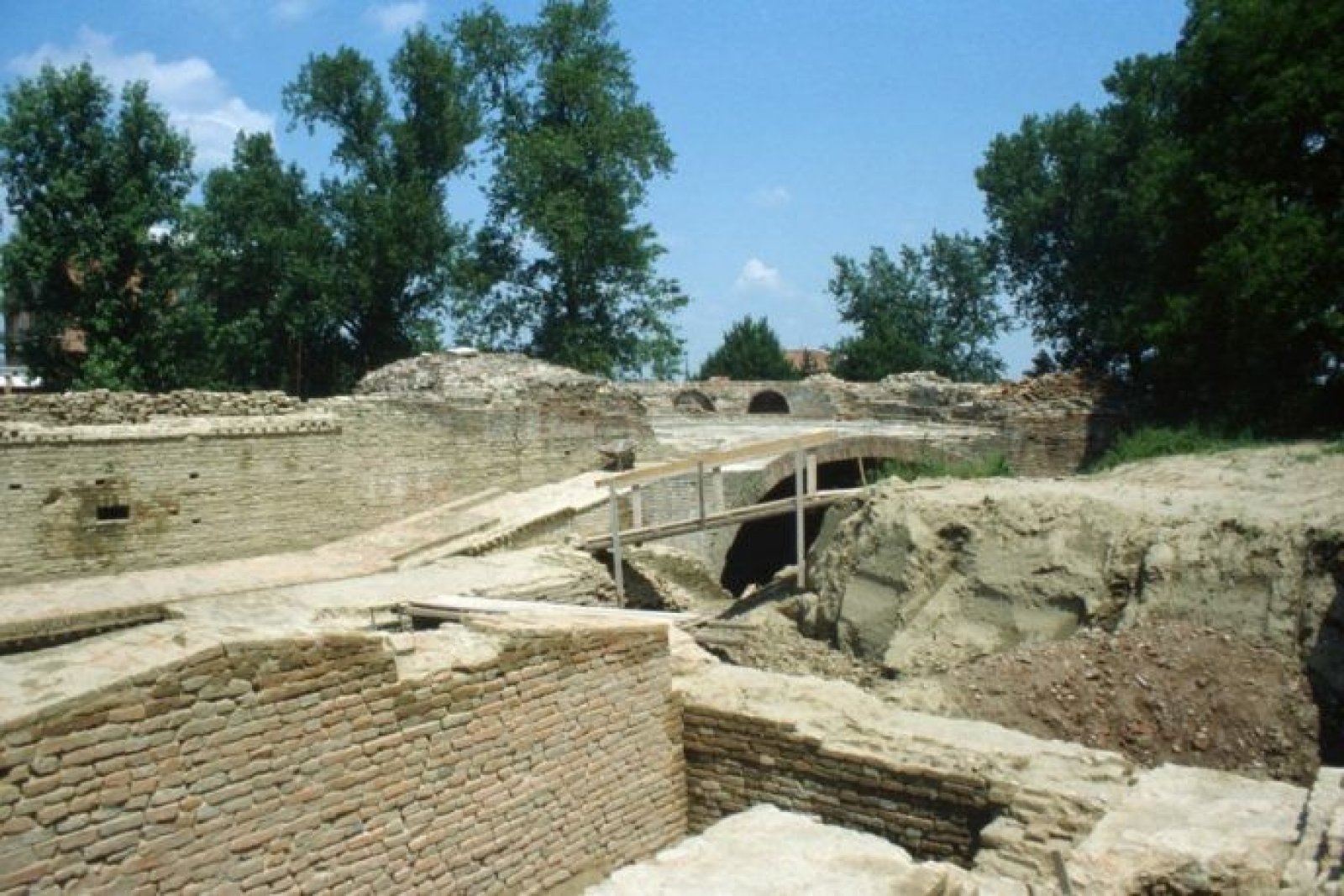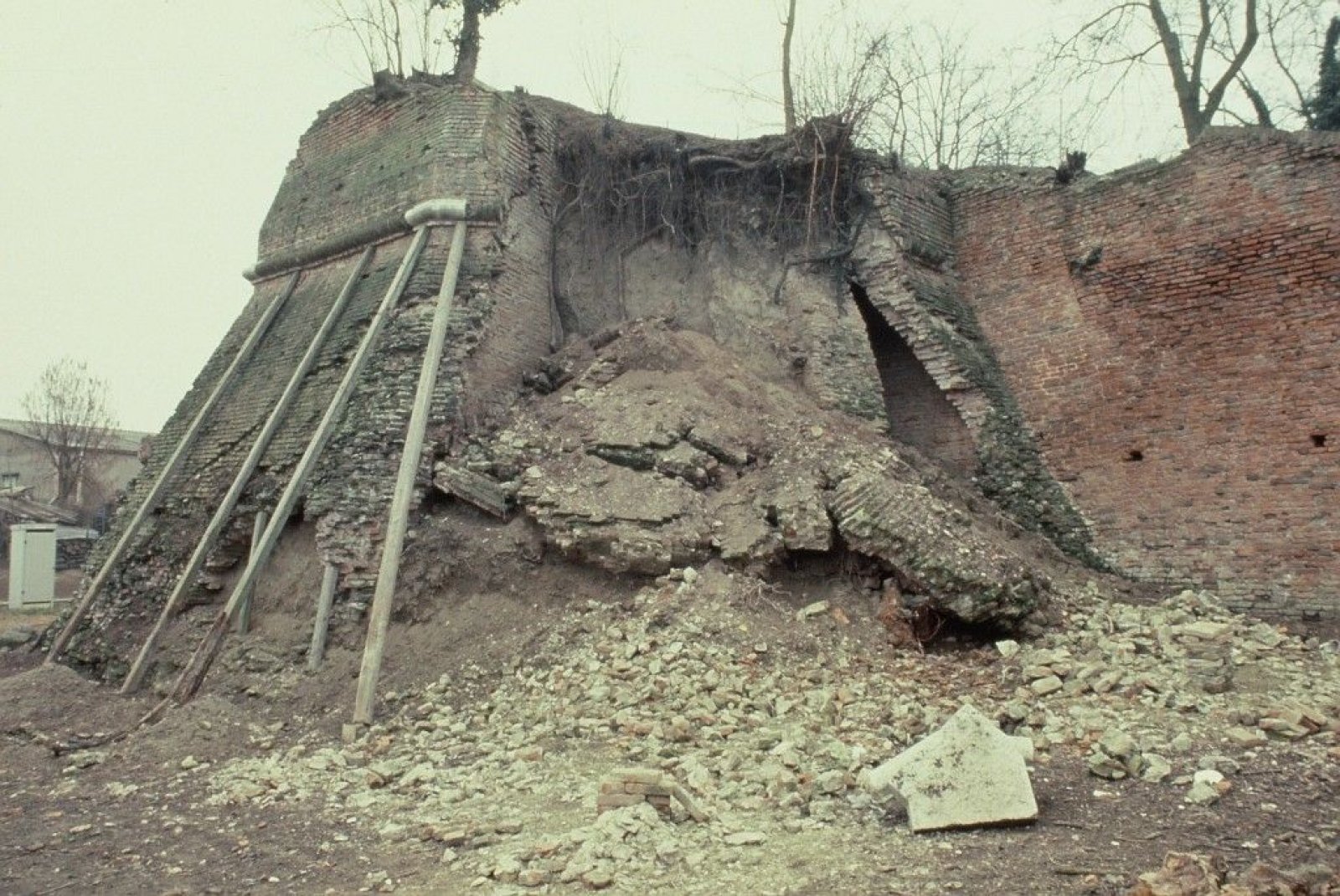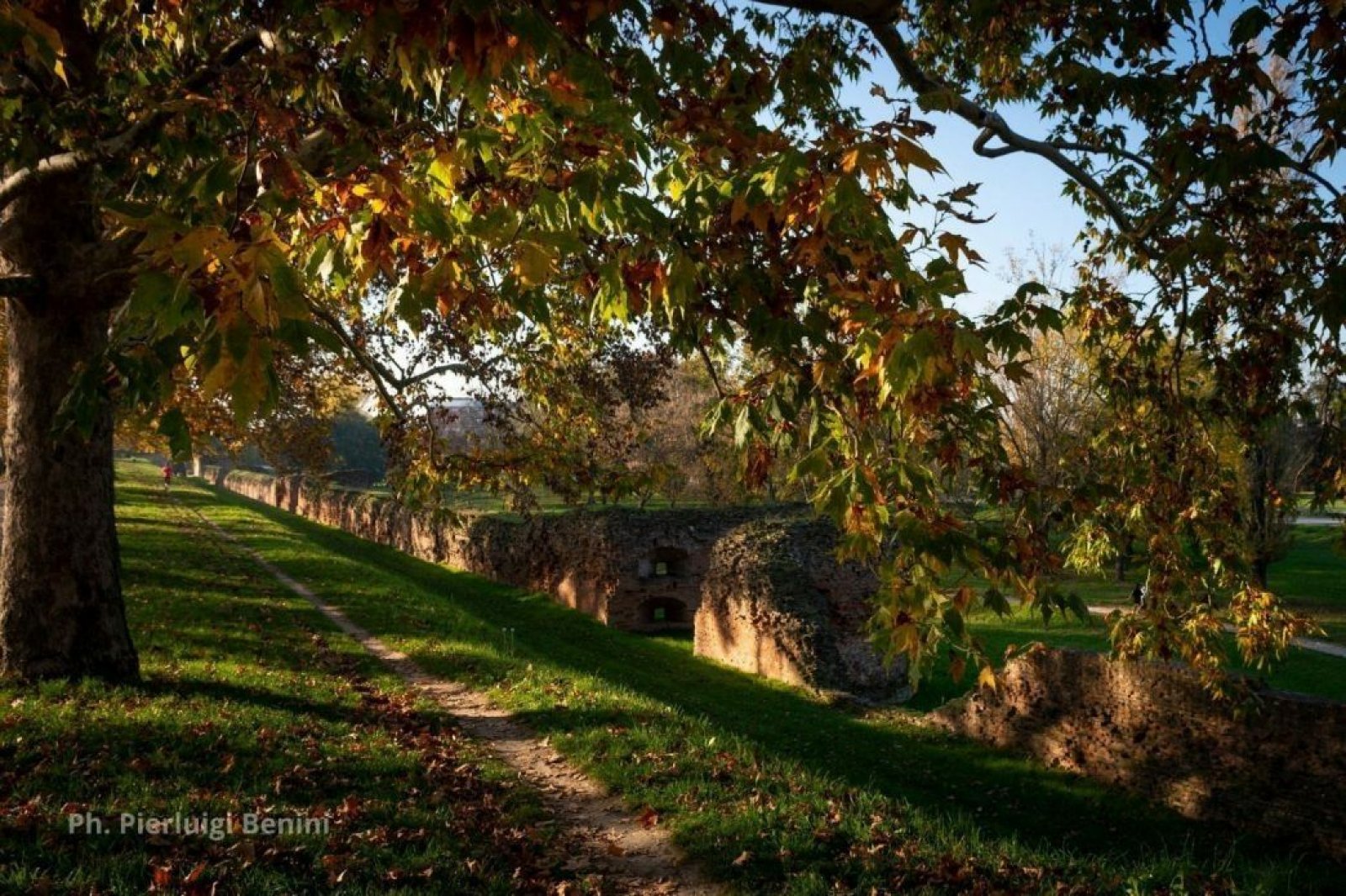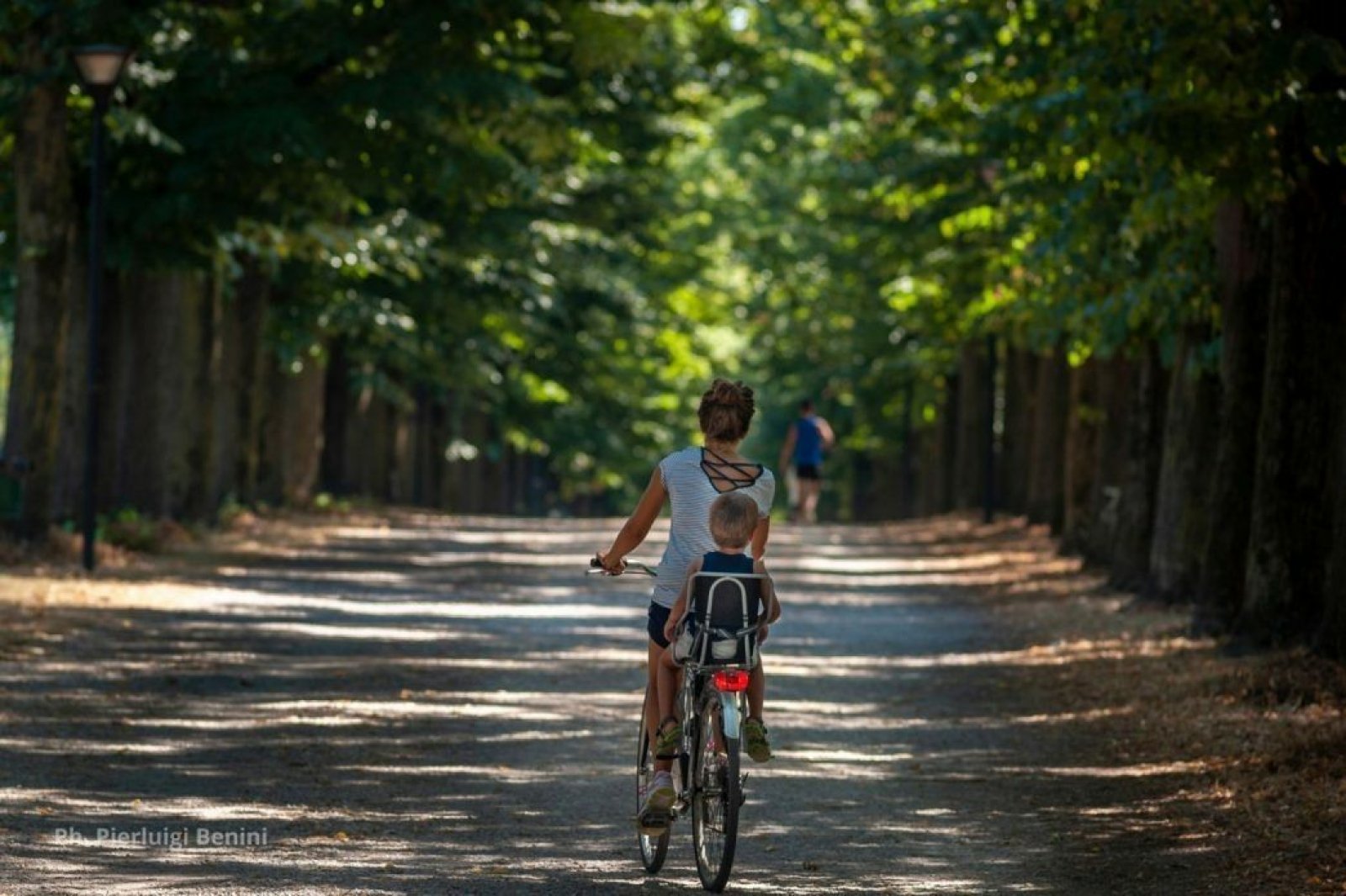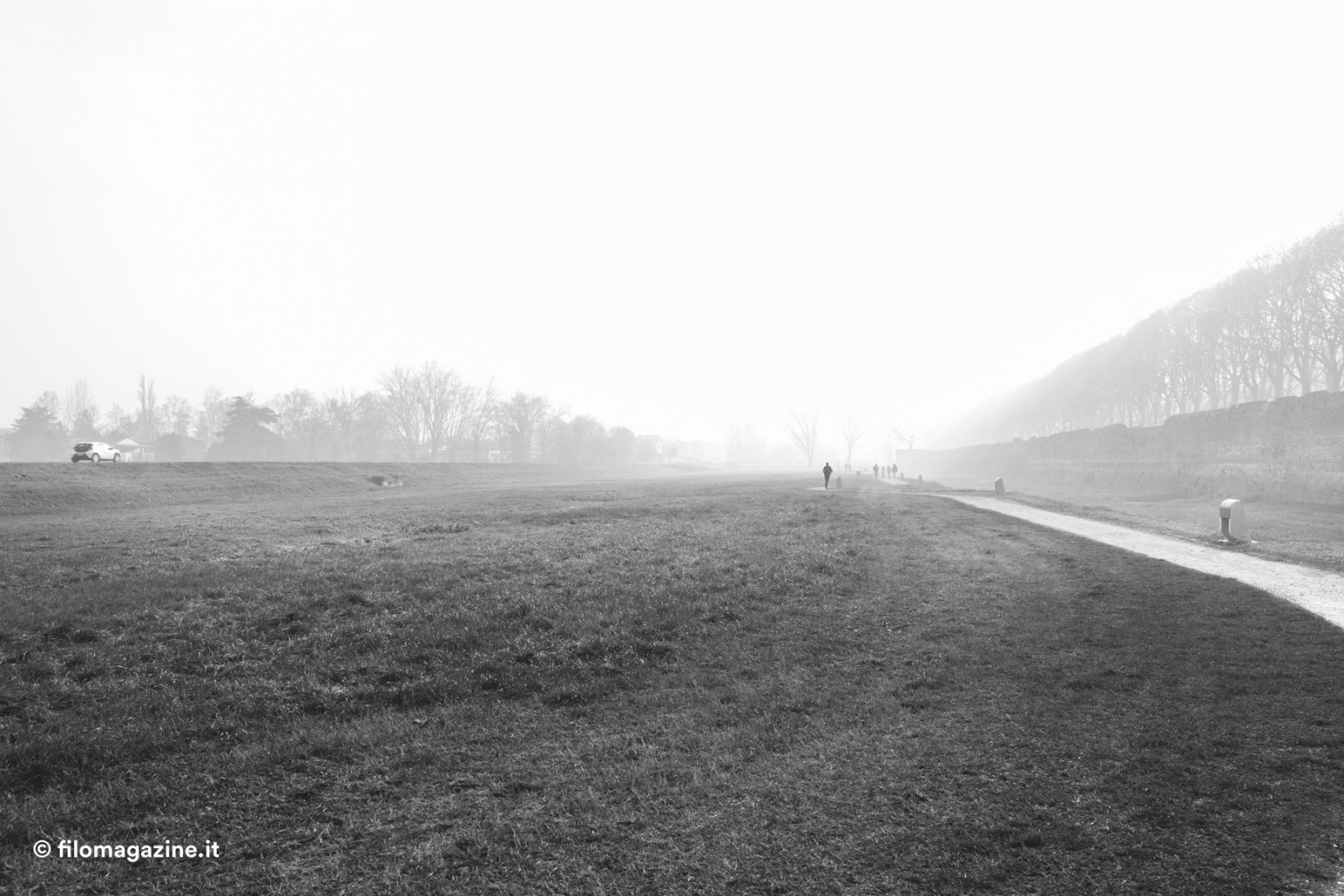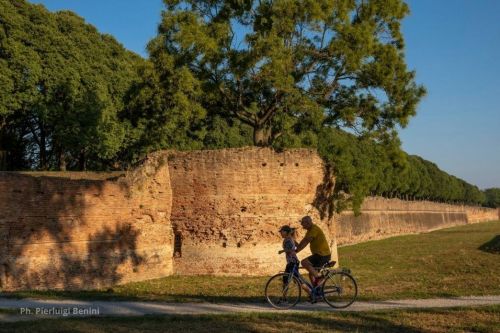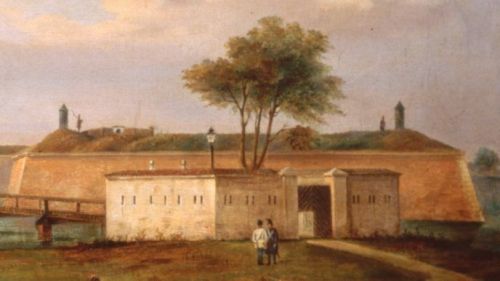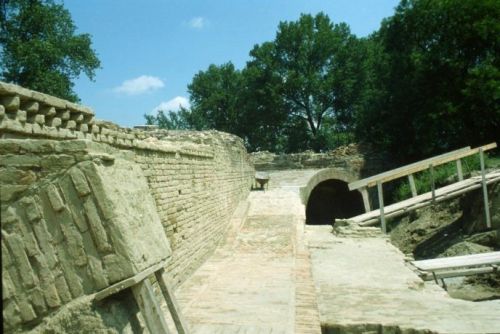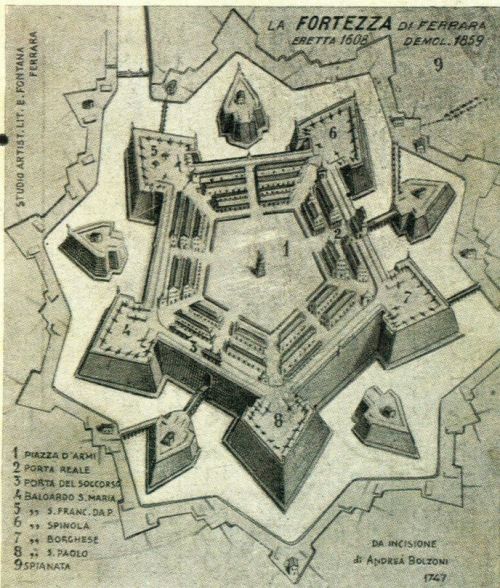A journey through history, nature and identity in a UNESCO World Heritage site
Walking along the Walls of Ferrara means embarking on a journey through time, surrounded by silence, nature, and visible traces of the city’s Renaissance glory. Stretching for approximately 9 kilometers, the city’s walls are far more than ancient fortifications—they are the living symbol of a Ferrara that has evolved over the centuries while preserving its soul. Recognized as a UNESCO World Heritage Site in 1995, they are among the best-preserved examples of Renaissance military architecture in Europe.
From Byzantine origins to the Este Renaissance
The first fortifications in Ferrara date back to the 6th century, when the Byzantines built defensive structures to protect a crucial ferry crossing on the River Po. In the 10th century, Tedaldo of Canossa expanded these defenses and laid the foundation for a growing urban center. But it was in the 13th century, with the rise of the Este dynasty, that Ferrara took on the character of a true fortified city. The walls became not only a military stronghold but also a symbol of power and prestige.
Between the 15th and 16th centuries, the renowned architect Biagio Rossetti transformed Ferrara’s defenses as part of the innovative urban plan known as the Addizione Erculea. Rossetti introduced a modern bastioned wall system—complete with towers, monumental gates, and moats—blending military function with urban harmony and beauty, in line with the Renaissance ideals of symmetry and proportion.
From military defense to daily life
After Ferrara was annexed to the Papal States in 1598, the defensive function of the walls gradually faded. A new fortress was constructed on orders from Pope Paul V and designed by Giovan Battista Aleotti, but it was ultimately dismantled in the late 1800s. The walls, however, endured—quiet witnesses to the city’s unfolding history.
In the 1980s, a major restoration project, supported by Italy’s Ministry of Cultural Heritage through FIO funding, breathed new life into these ancient structures. Towers, bastions and moats were stabilized, while iconic gates such as Porta degli Angeli—through which the last Duke of Ferrara, Cesare d’Este, left the city in 1598—were fully restored.
The walls today: a living, breathing heritage
Today, Ferrara’s walls are not just historical remnants; they are an integral part of daily life. The green belt that surrounds them has become a cherished public space—perfect for walking, running or cycling. Ferrara is known as “the city of bicycles,” and riding along the city walls, immersed in nature and history, is one of the most authentic ways to experience its charm.
Each season paints a different picture: in autumn, the tree-lined paths glow with shades of red and gold; in winter, a soft mist wraps the landscape in a dreamlike atmosphere. For locals, a walk along the walls—especially on a sunny Sunday morning—is a beloved ritual, a moment of peace and reflection.
Ferrara’s walls are not just boundaries: they are guardians of memory, silent narrators of centuries past, and timeless companions to a city that continues to move forward, hand in hand with its beauty.

